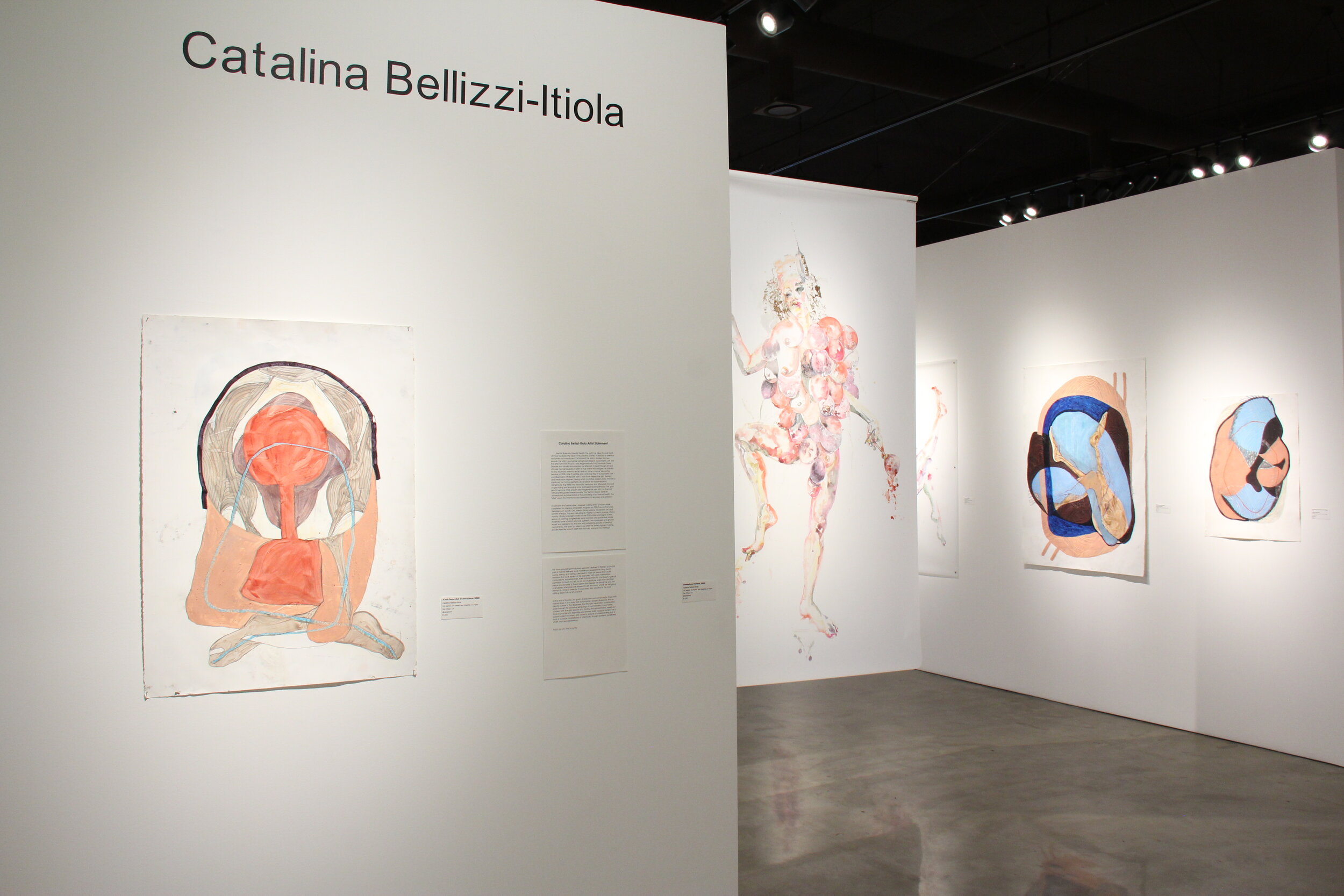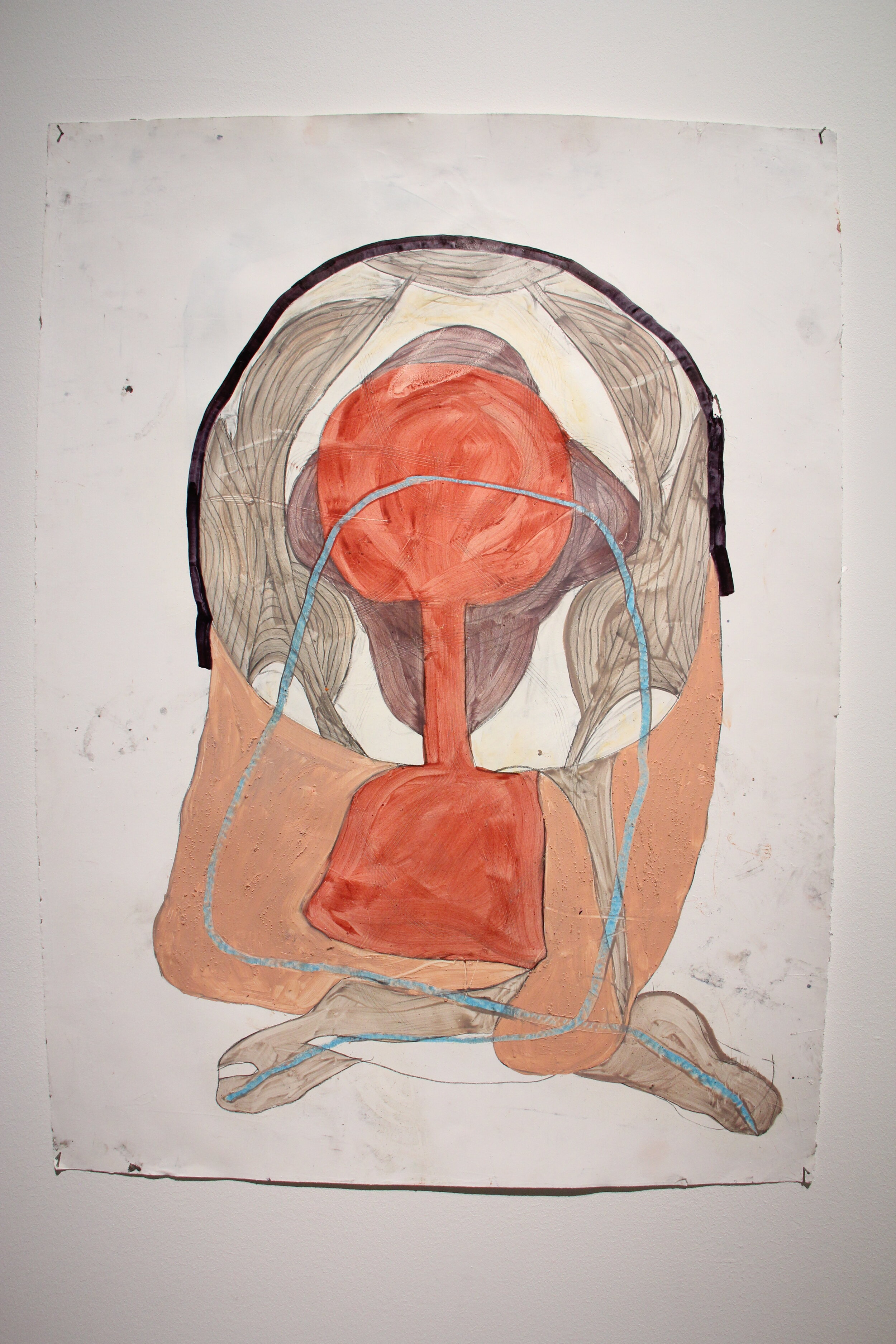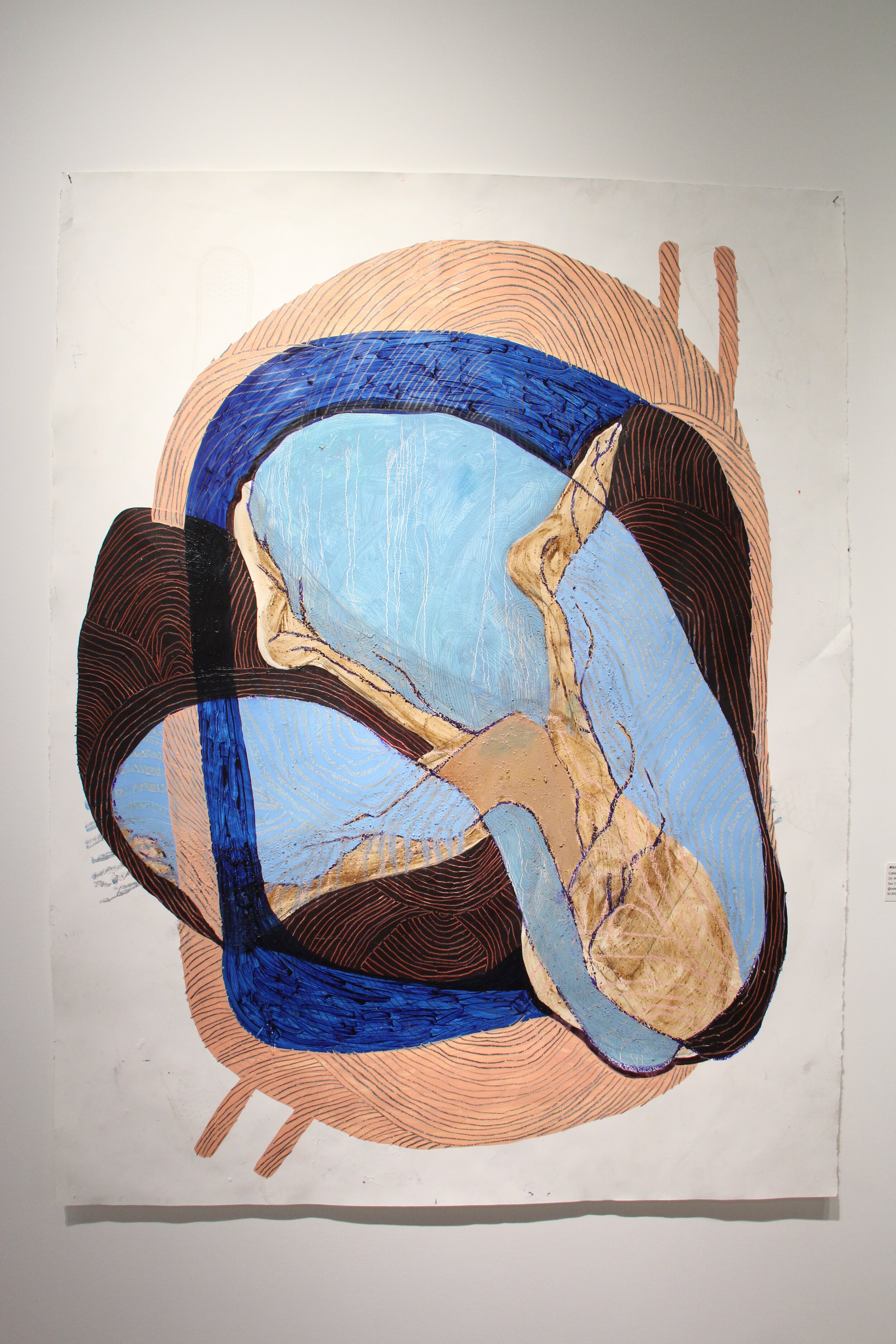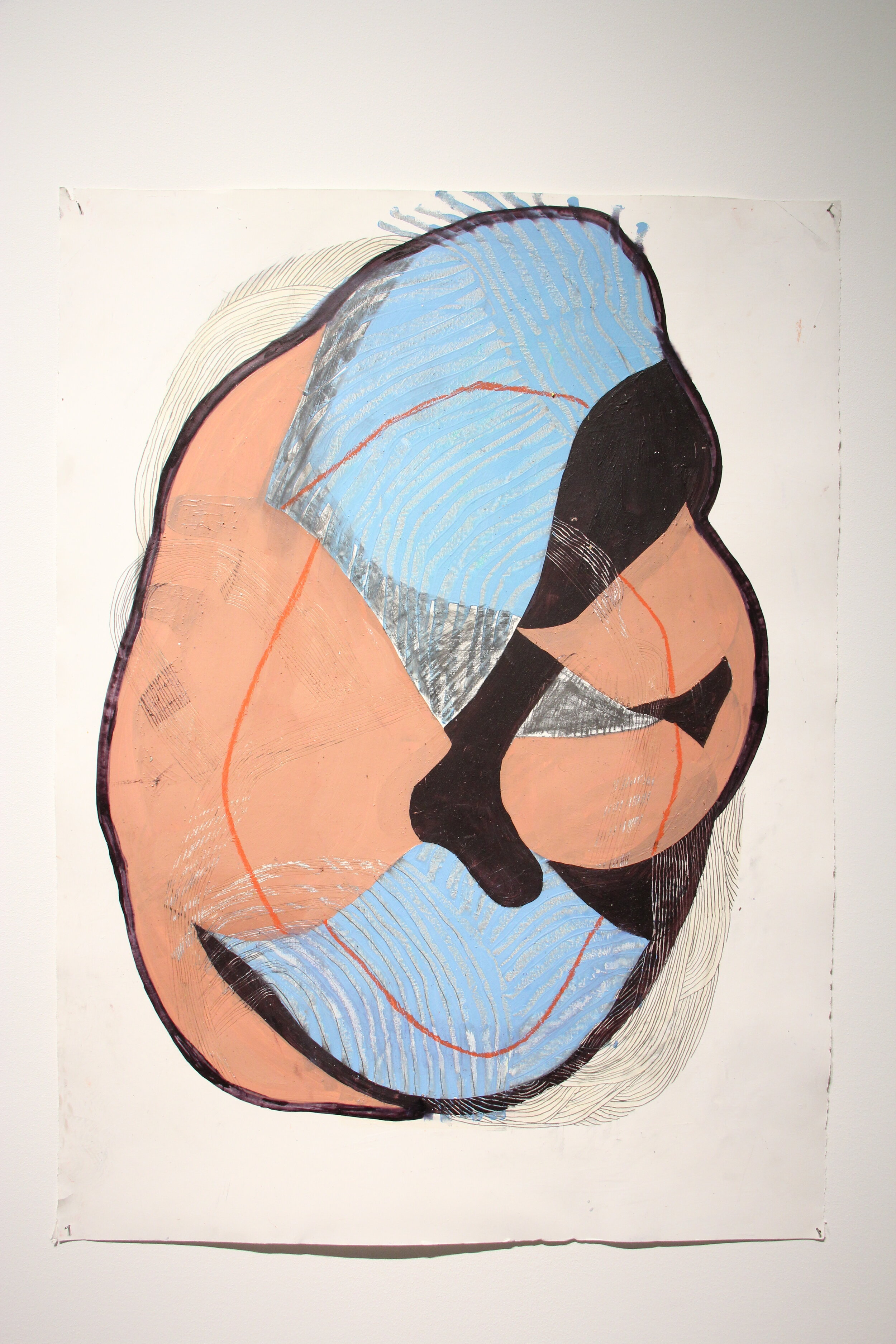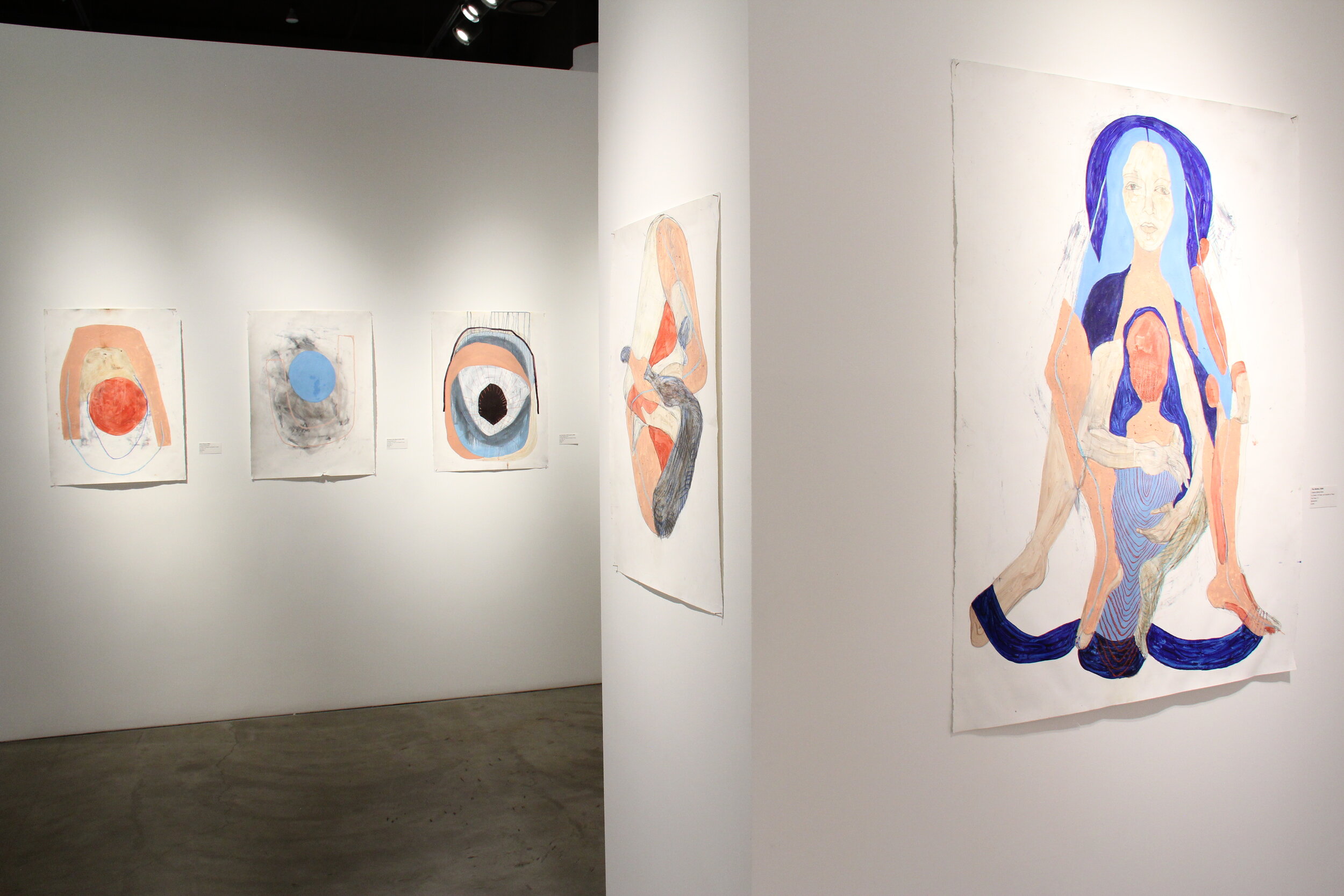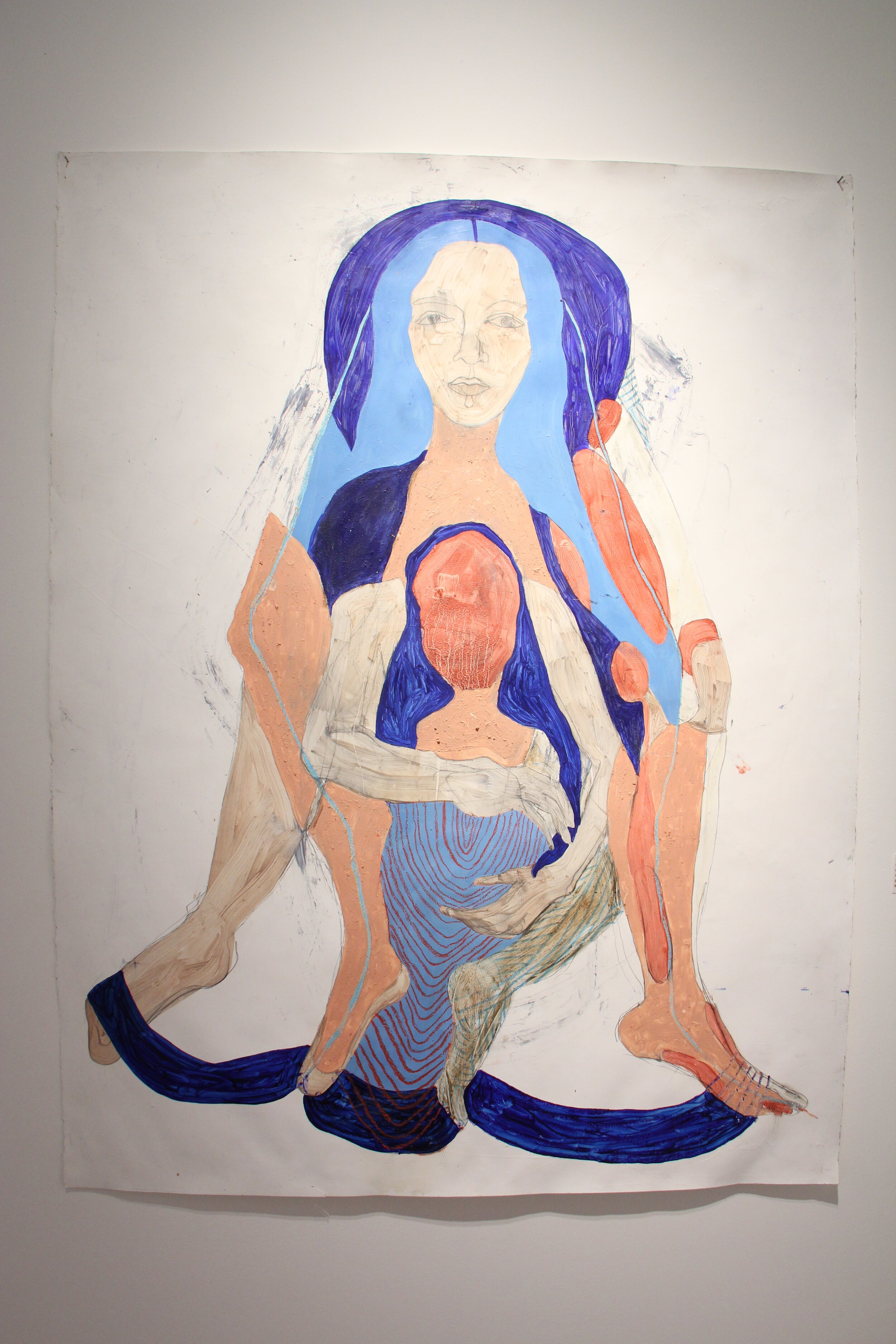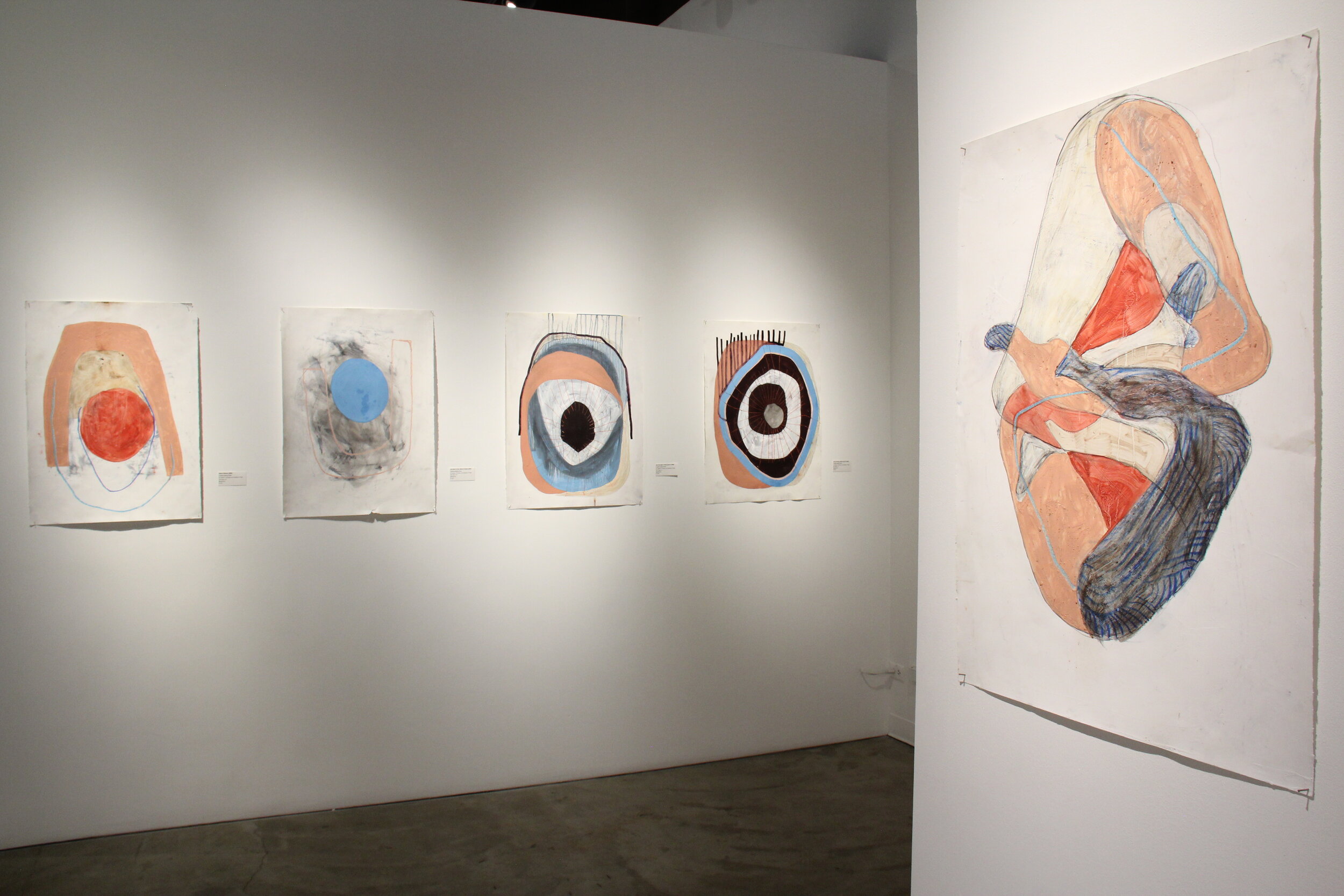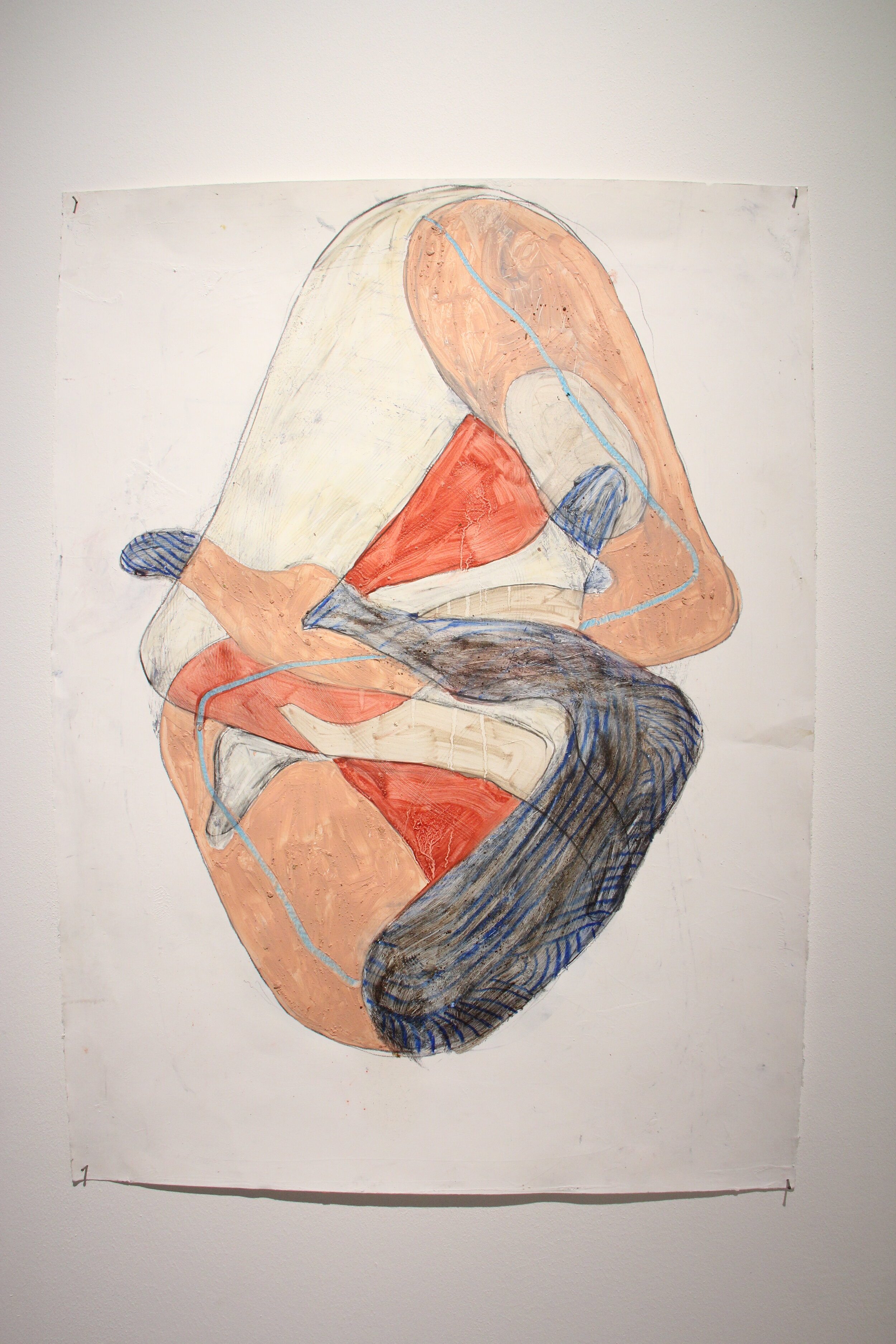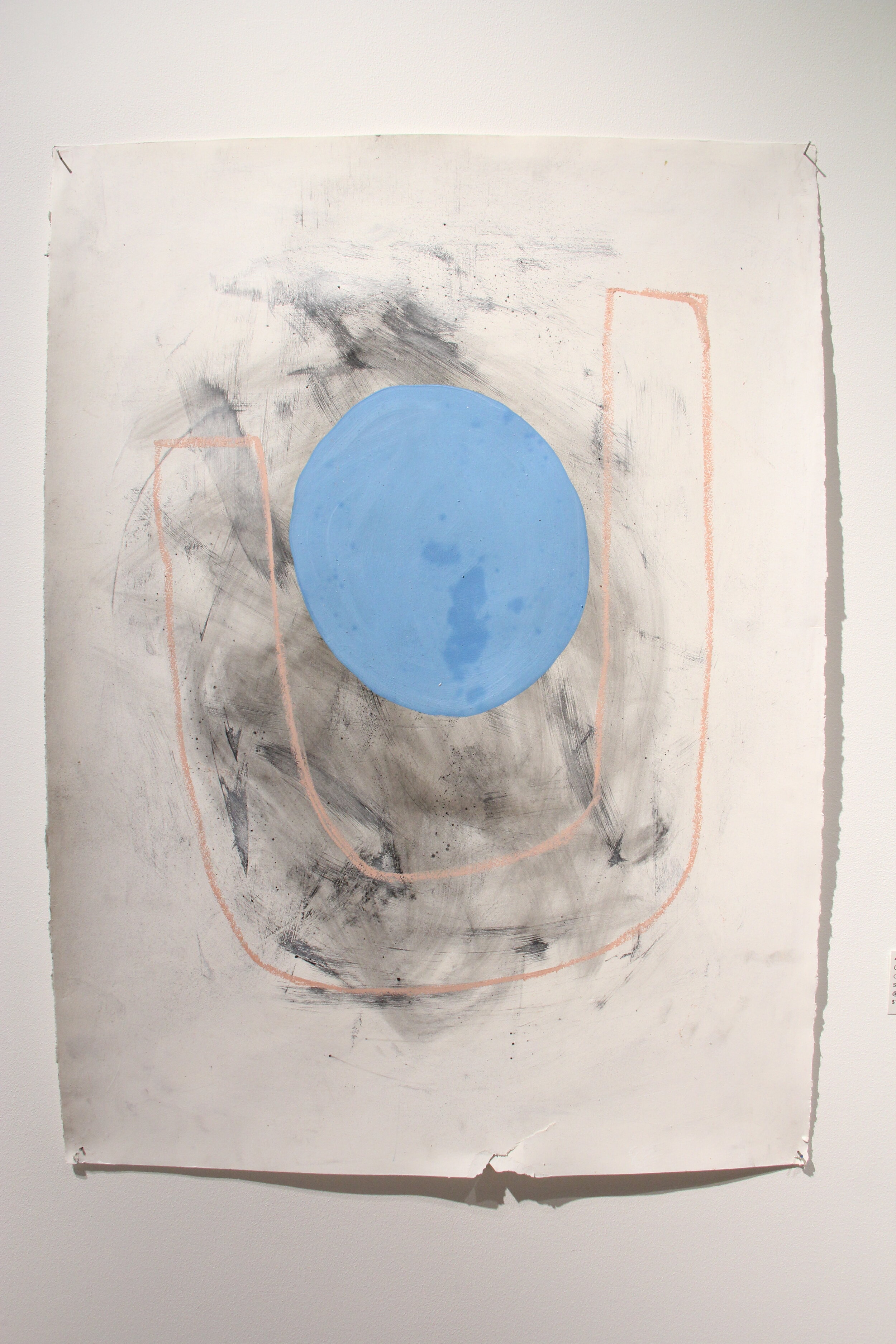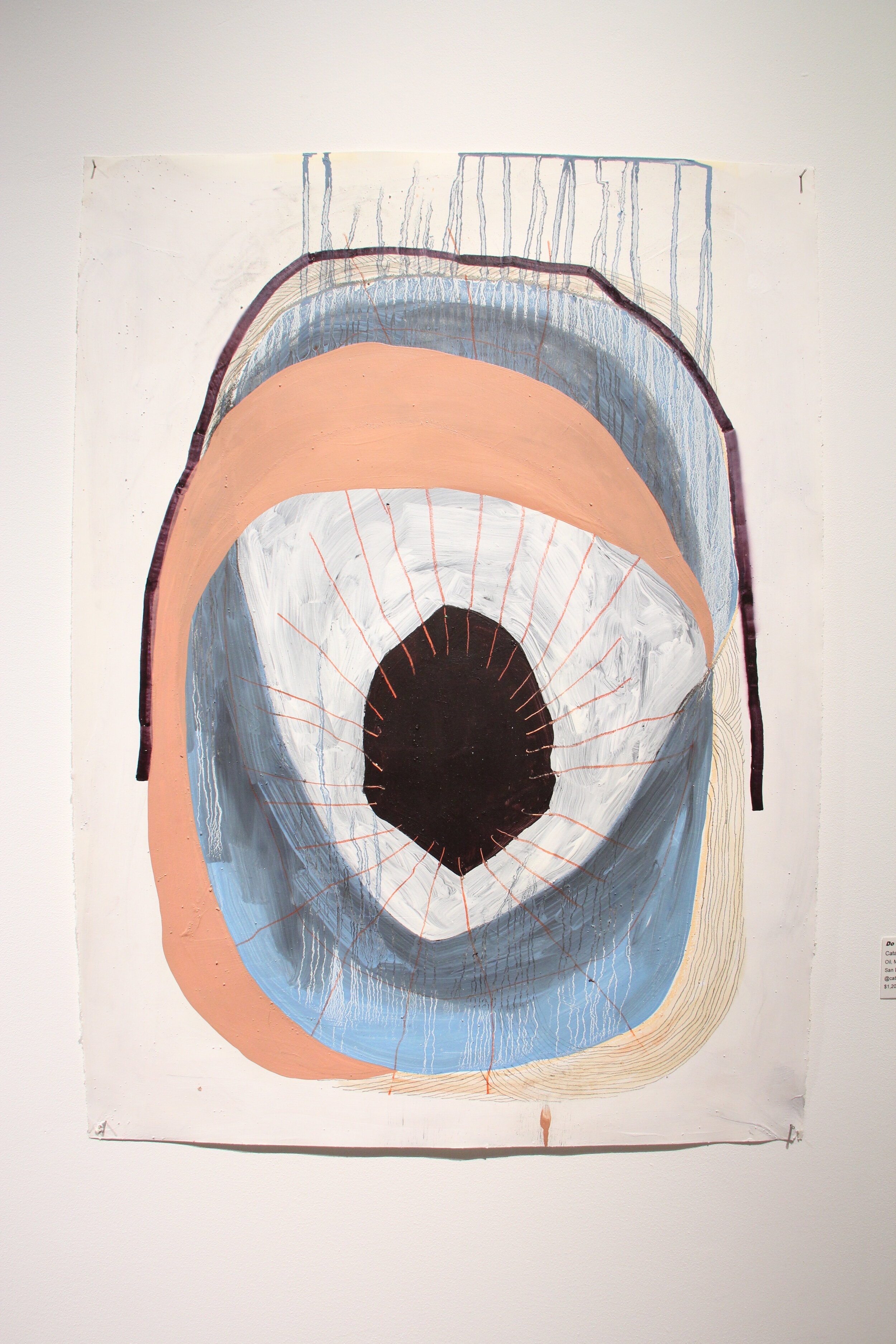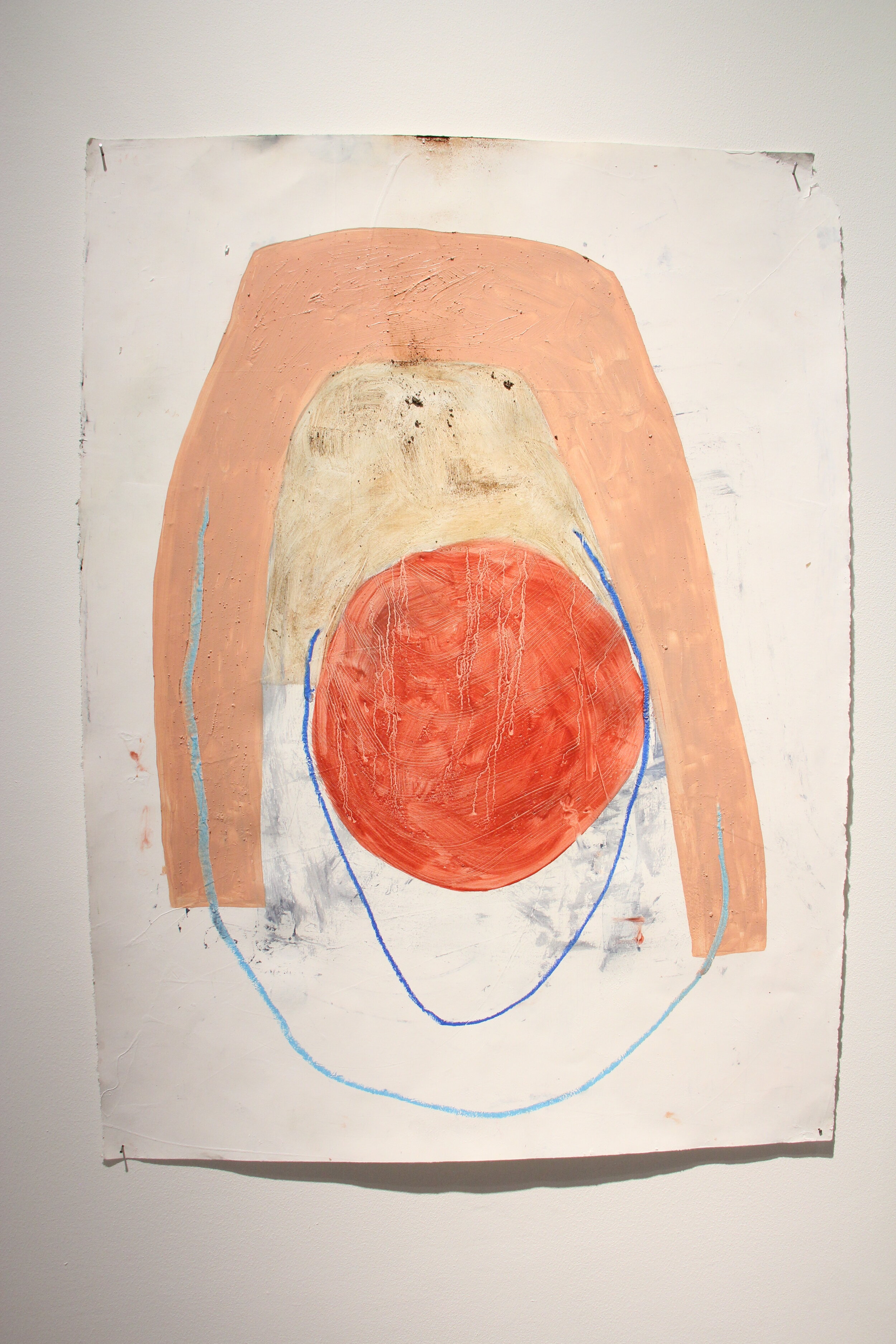Catalina Bellizzi-Itiola
Catalina Bellizzi-Itiola Artist Statement
Mental Illness and Mental Health. The path I've taken through both of those has been the heart of my creative journey in seasons of intention and others not intentioned. CATAPHANT the artist is divided into two people: the artist I was before being hospitalized in a psychiatric unit and the artist I am now. In 2018 I was diagnosed with Post Traumatic Stress Disorder and visually documented my attempts to heal through art and ultimate mental breakdown after a year of two miscarriages, an inability to stop traumatic memory recall, and my father's cancer becoming terminal. In 2020, after 9 horrible and confusing days in a psychiatric unit. I was diagnosed with Bipolar type 2 and finally began the right therapy and medication regimen, during which my father passed away. This was a significant turn for my aesthetic, since before the hospitalization I dangerously dug deep into traumatic memories and afterwards focused on grounding and re-routing once damaged neural pathways. The goal was to become more present and integrate the past fully into the past with properly-guided breakthroughs. The "before" pieces were an unintentional documentation of the unraveling of my mental health. The "after" was/is the intentional documentation of recovery and remission.
In between the before/after I stopped making art for 6 months while I completed an Intensive Outpatient Program for PTSD/Trauma that used therapies such as CBT, CPT, internal family systems, movement, art, and somatic therapy. This was a grueling but highly successful process. After 6 months, I finally no longer scored on the PTSD scale and began a new season of paintings progressively using non-toxic and sustainably made materials, some of which are rock pigments I've scavenged and ground myself as a metaphor for the slow and painstaking process of treating mental illness. The paint I'm able to use after the 5-step pigment making process feels like smooth relief from the hard work put into making it.
The more grounding/mindfulness exercises I learned in therapy (a crucial part of mental wellness) were multi-sensory experiences using touch, sound, seeing, and tasting. I decided to make art pieces that could enhance the visual aspect of the exercises. Soft colors, harmonious compositions, traceable lines, even surfaces that you can touch (I give all permission to touch my art). As an act of gratitude every now and then pieces are donated to the programs that helped me along the way. No one besides attendees are allowed to see the rooms where we did group therapy 3-4 times a week for 3 hours every day, and that is the most fulfilling aspect of my art practice.
At the end of the day, my goal is to educate and advocate for those with mental illness. It is no easy feat to navigate a proper diagnoses, find an identity outside of the diagnoses, find the right medication combination, parse through the secretive genealogy of mental illness in your family, connect with the right doctors and funding the appointments, weed out those in your life who stigmatize and shame, build a support system, be a support system for others, and come to a place of understanding that a brain is a unique constellation of chemicals, thought patterns, awareness of self, and neural pathways.
That is my art. That is my life.

